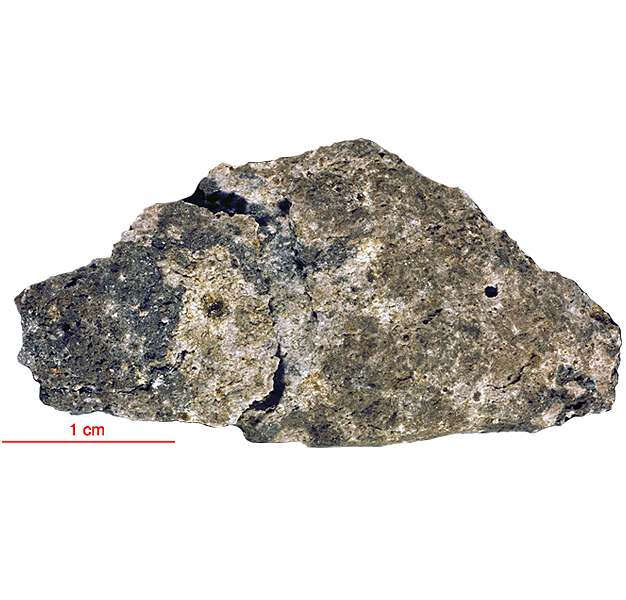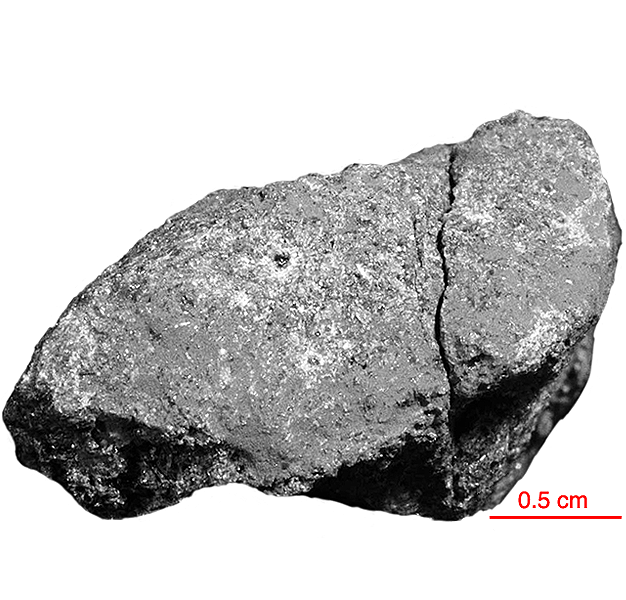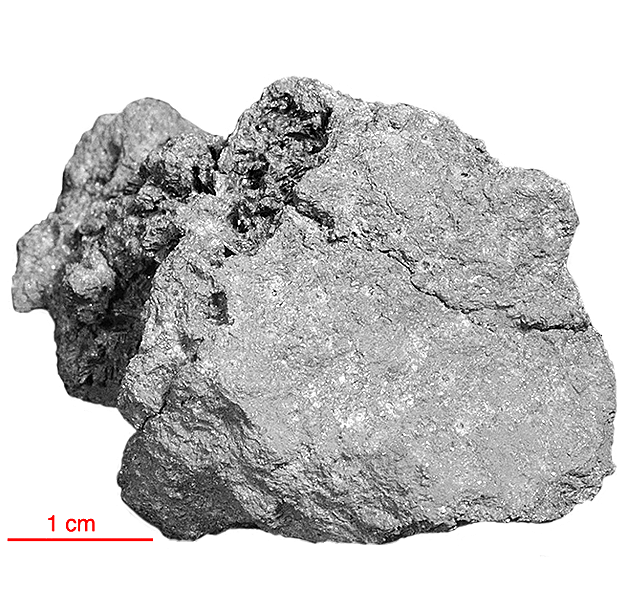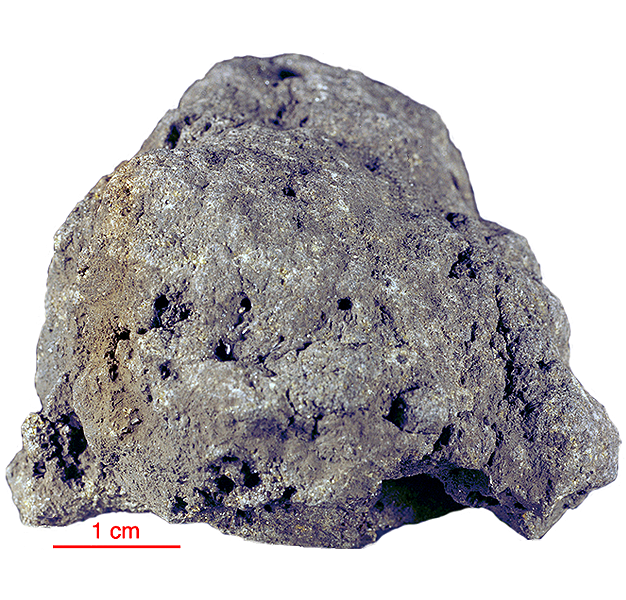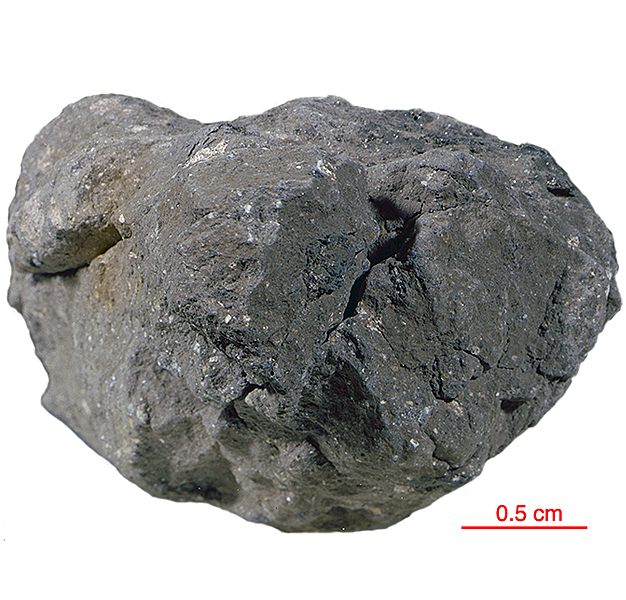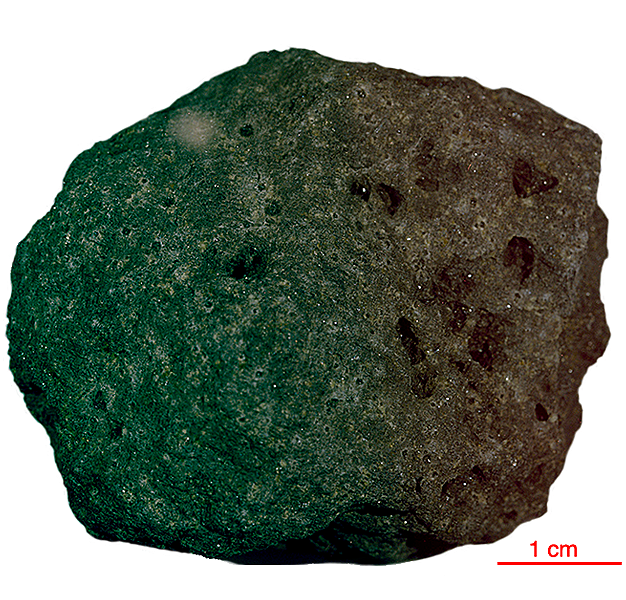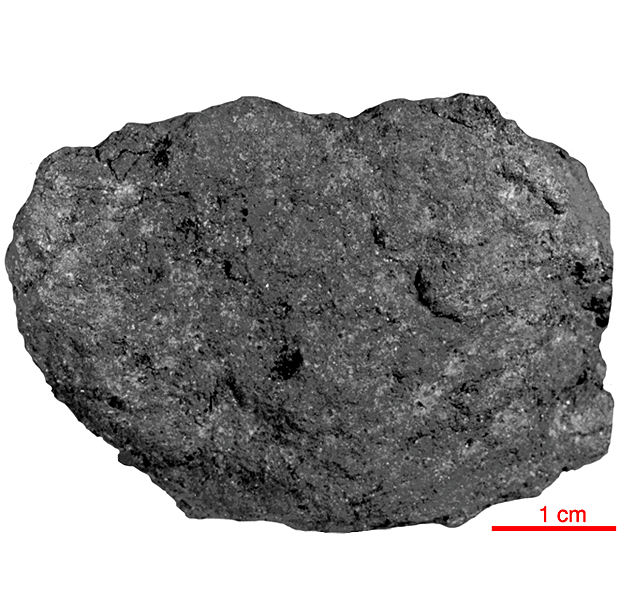
Fact sheet
12045 is comparable to olivine vitrophyre 12008. Like 12008, 12045 has glomerophyric aggregates of early-formed olivine phenocrysts, spinel grains and rare metallic iron droplets. It also has elongate non-skeletal phenocrysts of titanoaugite. These phenocryst assemblages are set in a variolitic groundmass of acicular pyroxene, plagioclase, silica, ilmenite, troilite and metal. The ilmenite is highly skeletal and occurs as parallel sets of thin platelets. Thus 12045 appears to be a more crystalline, less glassy version of 12008.
The sample weighed 63 grams before analysis. It does not appear to have been dated.
Further details of this and other Apollo samples are here: http://curator.jsc.nasa.gov/lunar/
Apollo 12 returned 34 kilograms of samples, including 45 rocks, samples of lunar 'soil', and several core tubes that included material from as much as 40 centimetres below the lunar surface.
Apollo 12 rocks were almost all basalts, with only two breccias in the returned samples. The basalts at the Apollo 12 site formed 3.1 to 3.3 billion years ago, roughly 500 million years later than the Apollo 11 basalts. Overall, there is much less of the element titanium in the Apollo 12 samples than in the Apollo 11 samples, which explains the more reddish colour of this region. The differences in age and chemical composition between the Apollo 11 and Apollo 12 samples demonstrate that mare volcanism did not occur as a single, Moon-wide melting event.
Apollo 12 was launched on 14 November 1969.

